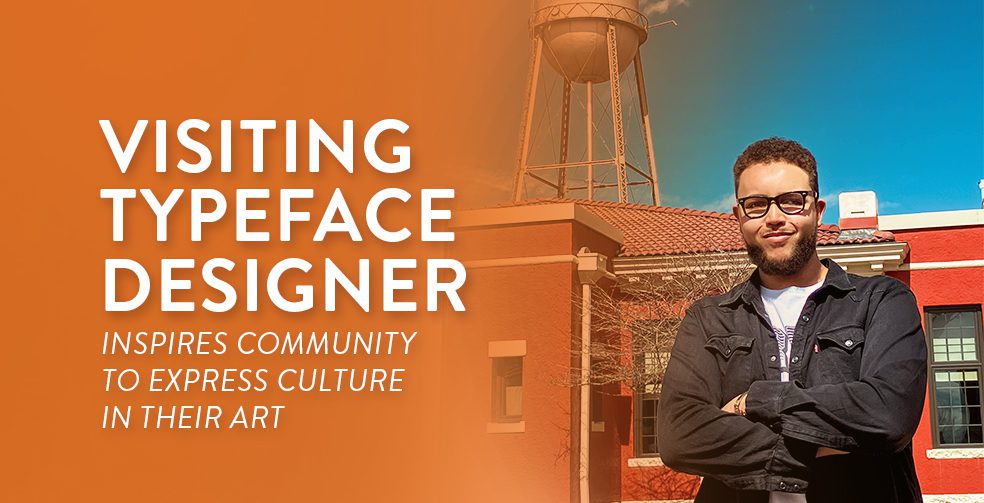Who is Tré Seals?
RMCAD was excited to welcome Tré Seals in March 2023 as the most recent entry in the Visiting Artist, Scholar, Designer Program (VASD). Tré is an exceptional artist, who even as a young professional, has already made a big splash in the design world by founding Vocal Type and working with recognizable names such as Spike Lee, Colin Kaepernick, and Time Magazine. Seals was also named one of Forbes’ “30 under 30” in 2023. As part of RMCAD’s Spring 2023 VASD Program, Seals joined us over the course of two days and three events on the RMCAD campus to foster creativity and community.
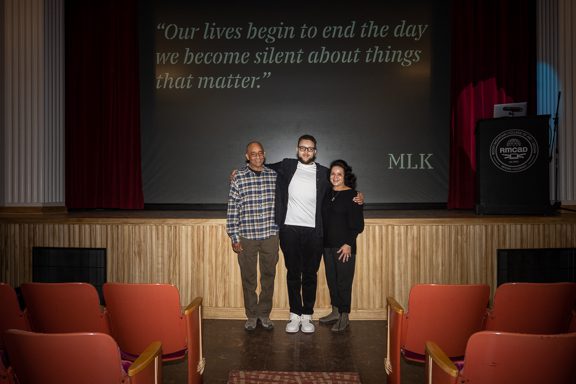
Becoming Vocal – Designer Talk
In his keynote speech titled “Becoming Vocal,” Tré Seals discussed many of the successes and struggles he has faced and how they have inspired his work as a designer. Like many burgeoning artists early in their careers, Seals found himself with a series of corporate and freelance jobs where he faced several creative blocks and the glaring realtiy of the lack of diveristy in the graphic design field. Through these hurdles, Seals realized he became far more passionate about a piece of work when it was representative of himself and celebrated the culture of underrepresented groups and voices. Seals found that the best art is always made with the care and attention to detail you find in someone’s unique story.
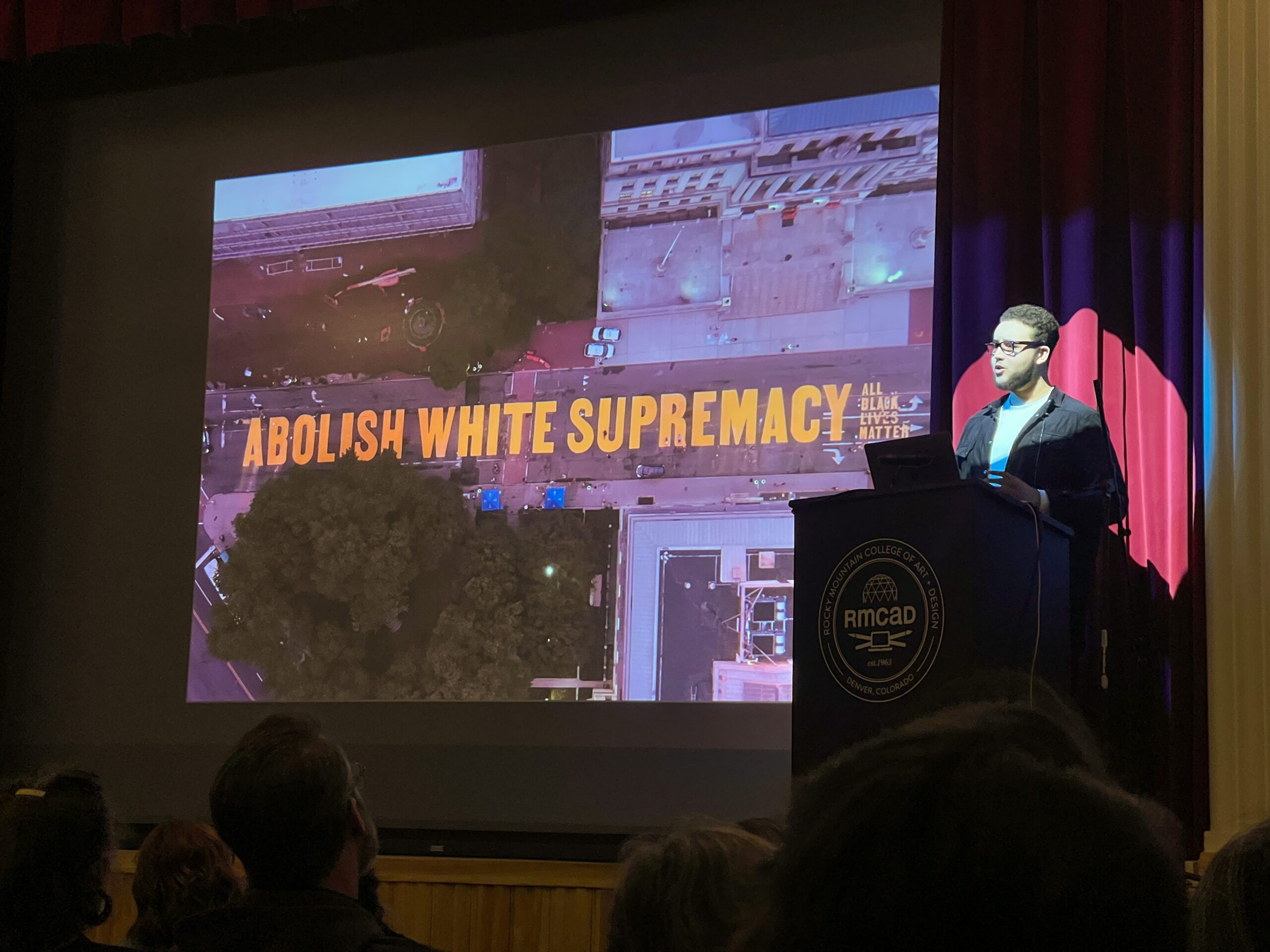
This realization made Seals think back to all of the typefaces that had truly inspired him. In particular, the signs made during the civil rights movement of the 1960s. He discussed this further at his Designer Talk when a RMCAD student asked: “You have all of these incredible reference photos of civil rights protests and signs that you drew many of your fonts from. What’s your process? Do you find a historical event and think about how you can turn that into a font? Or do you decide to make a font about civil rights and then do research?”
Seals shared, “My process is 25% research, 25% design, 25% research, and 25% design. When I first started out, I made the terrible mistake of doing all of my research in the beginning and then designing. However, one time, a week before I was going to release a beautiful Serif font, I found out that the person (seemingly a civil rights activist), who the font was going to be named after, was actually an FBI informant. For that reason, I ended up having to scrap that entire typeface. So that’s why my process is the way it is. Just in case I miss something.”
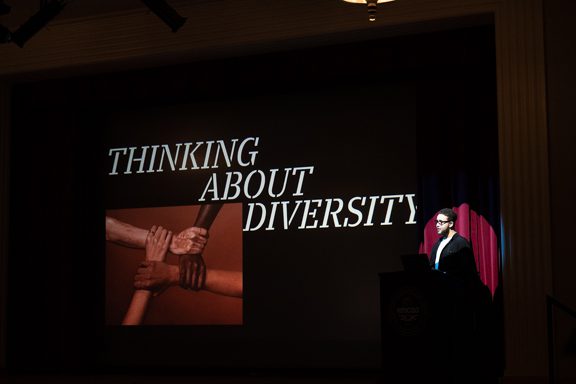
Another student asked, “You talk a lot about diversity in the making of your typefaces but do you ever think about accessibility? I have dyslexia so a lot of typefaces are hard for me to read. How do you bring in accessibility as part of that inclusion?”
Seals explained, “Yes, one of my hopes is to make a cursive typeface as I recently learned that cursive is easier to read for a lot of people with dyslexia. Beyond that, I am also working on typefaces that are inspired by the disability rights movement. Which I hope to make more accessible in the future.” Overall, Seals concluded the talk by encouraging artists to chase their dreams and not a paycheck because that’s when real art gets made and above all else “that everything happens for a reason”.
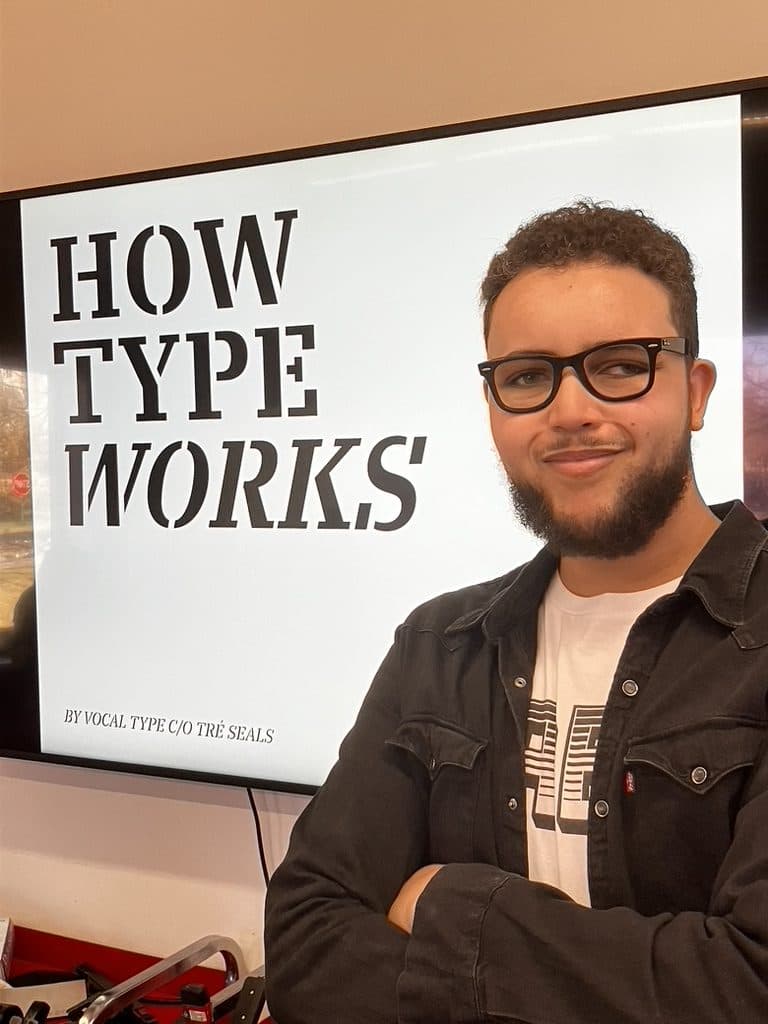
How Type Works Workshop
Font creation is often overlooked as a medium of artistry, however, text and unique characters are one of the most prevalent forms of design we encounter in our day-to-day lives. In this workshop, Tré Seals showed the RMCAD community how different fonts are created. Seals encouraged students to look at fonts not as a simple means of conveying language, but instead as an extension of culture.
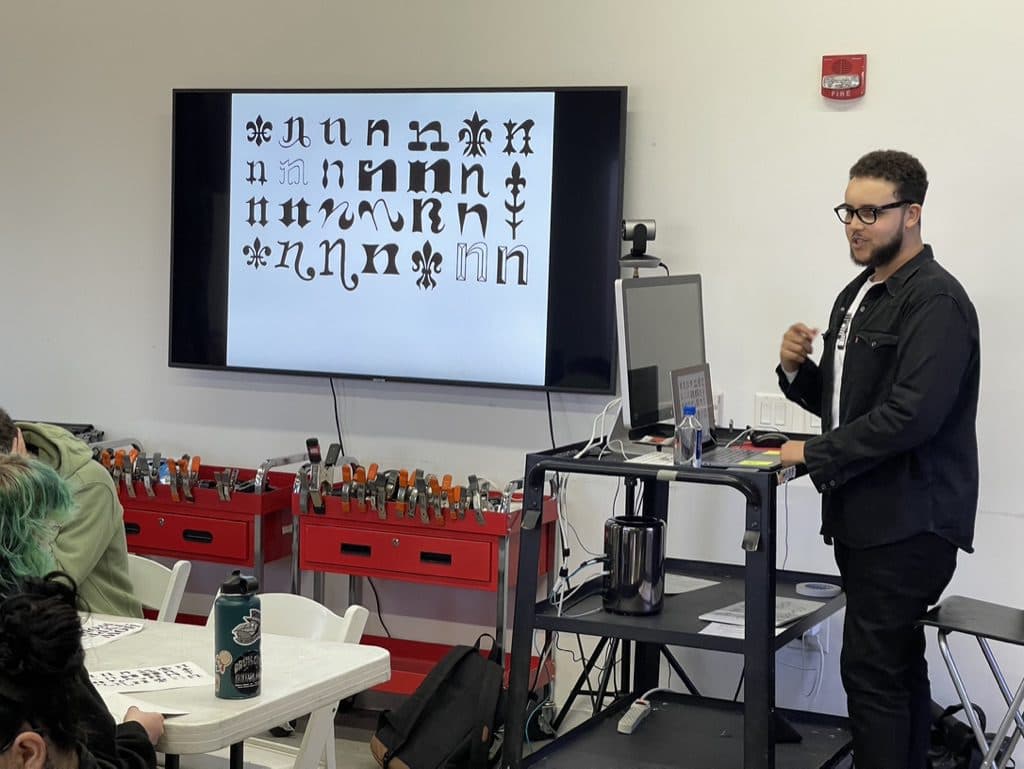
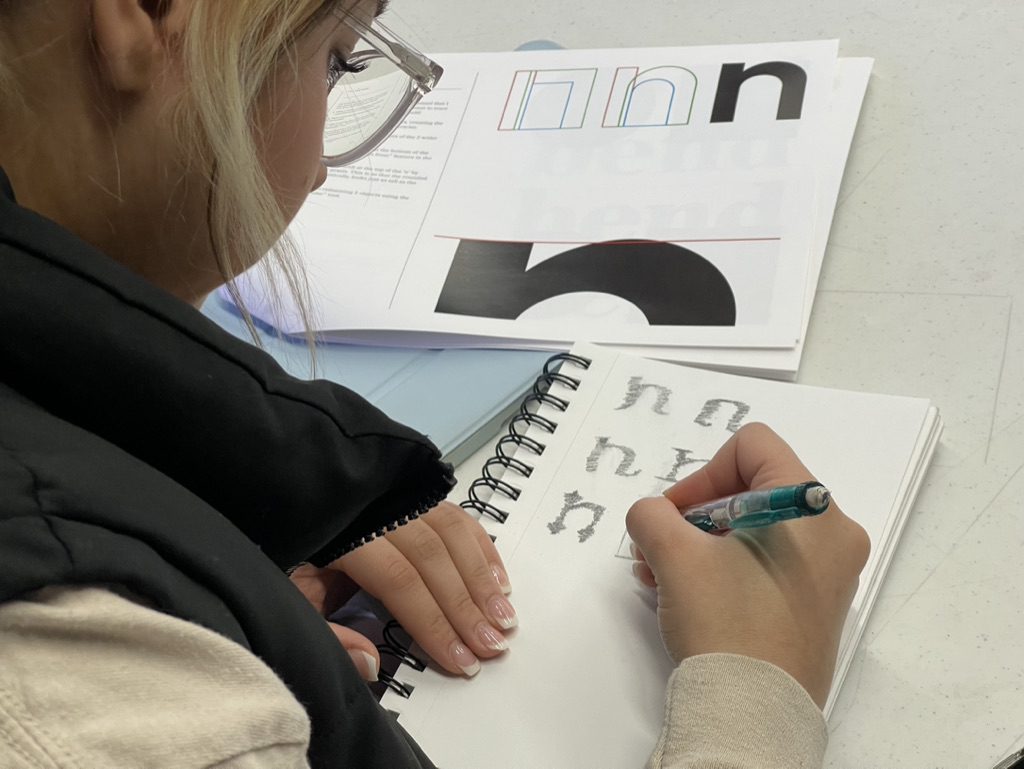
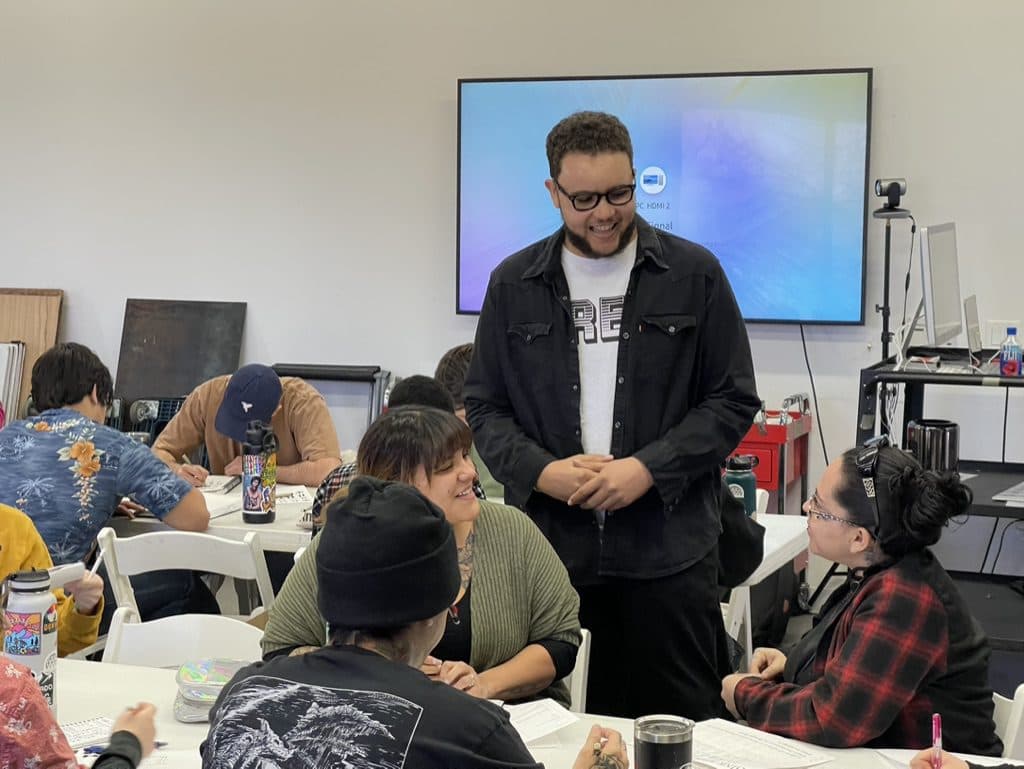
He inspired every student to consider their culture and how they are able to express their culture through fonts. In the images below, you can see how a group of RMCAD students were able to create their own unique typefaces by following Seals’ advice.
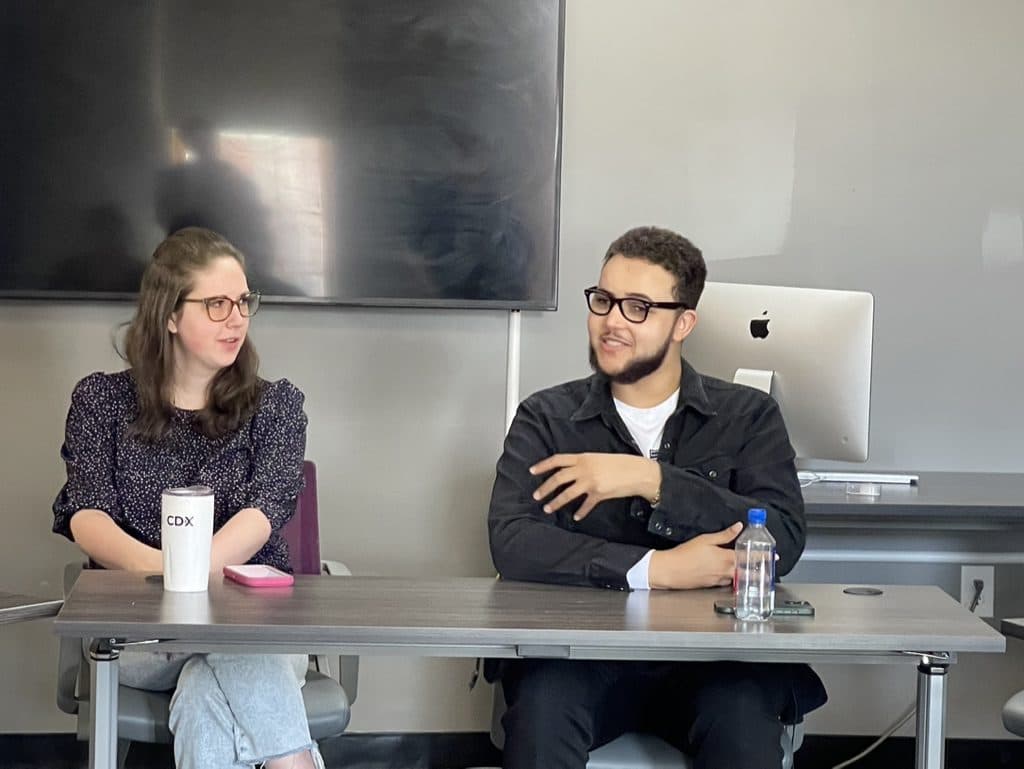
Student-Led Lunch
During the Student-Led Lunch, RMCAD students got the chance to ask Seals about his work and his career as a designer. This event gave RMCAD students a truly intimate experience to get to directly ask Seals more about the topics he had touched on in his previous demonstrations. Take a closer look at the questions below!
Fashion Design Student: How did you choose the font for your own website?
Tré Seals: The font I use on my website is an experimental font family that I’ve been working on for the past couple of years, and it’s what we call an eco-font, which is a font that is designed to save ink. Most eco-fonts either poke holes in the font so that the ink pools into the holes or carve out sections of the letters to achieve the same effect. What happens when you print things is that most of the ink pools in the corners of those letters. With my font, named Terra, the idea is to cut out those corners where the ink pools the most, which saves ink.
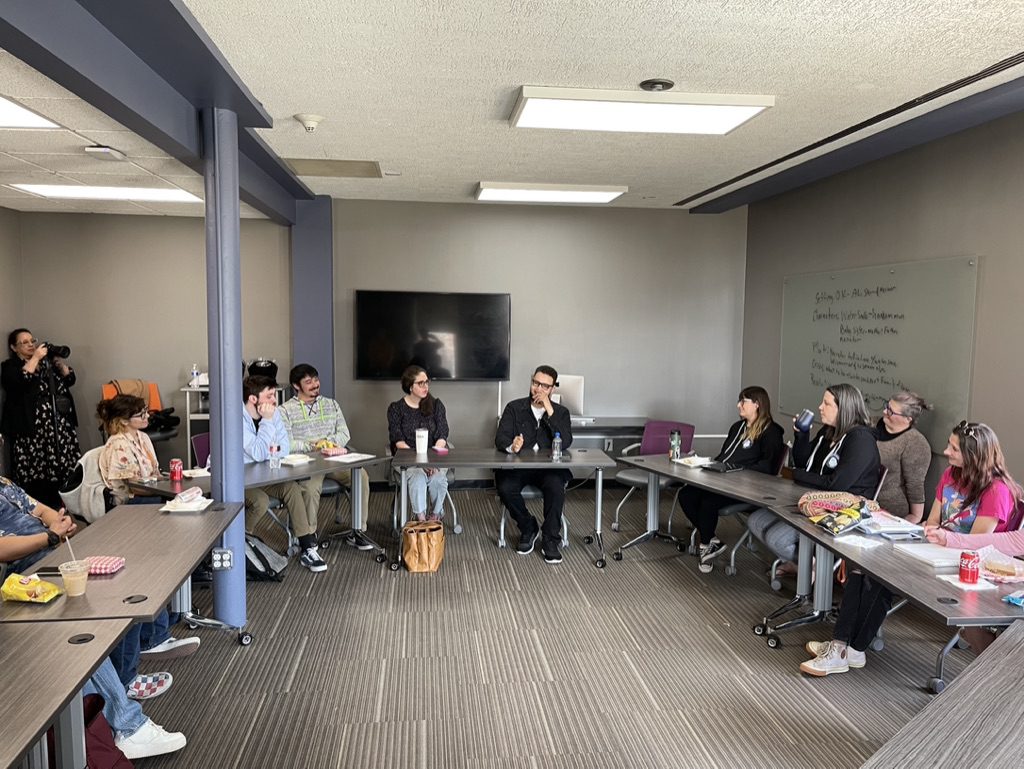
RMCAD Faculty Member: You say you were very driven to succeed, do you have any advice for our students on what steps they can take to succeed in whatever industry they are pursuing?
Tré Seals: I did an internship in Minneapolis in 2014 and on my last day of work, my boss said to me – “Wherever you go from here, make sure you’re not a wrist.” He said, “A wrist is someone who makes without being able to think about what they are making. They just make whatever their creative director or art director wants them to make without any creative input.”
Graphic Design Student: You spoke earlier about emerging artists breaking out on their own. What tactics would you recommend using?
Tré Seals: When I was coming up as an artist, I tried to be as catchy and kitschy as possible to get work. It wasn’t until I overcame that and started working on what I wanted that I really began to get more work. I would look at the work of other designers and I realized there were very few designers who would actually share their thoughts and inspiration behind their work. But by telling those stories, I was able to show clients how much thought and work I would put into even one little logo, and let them imagine what I would be able to do with an ever-larger project.
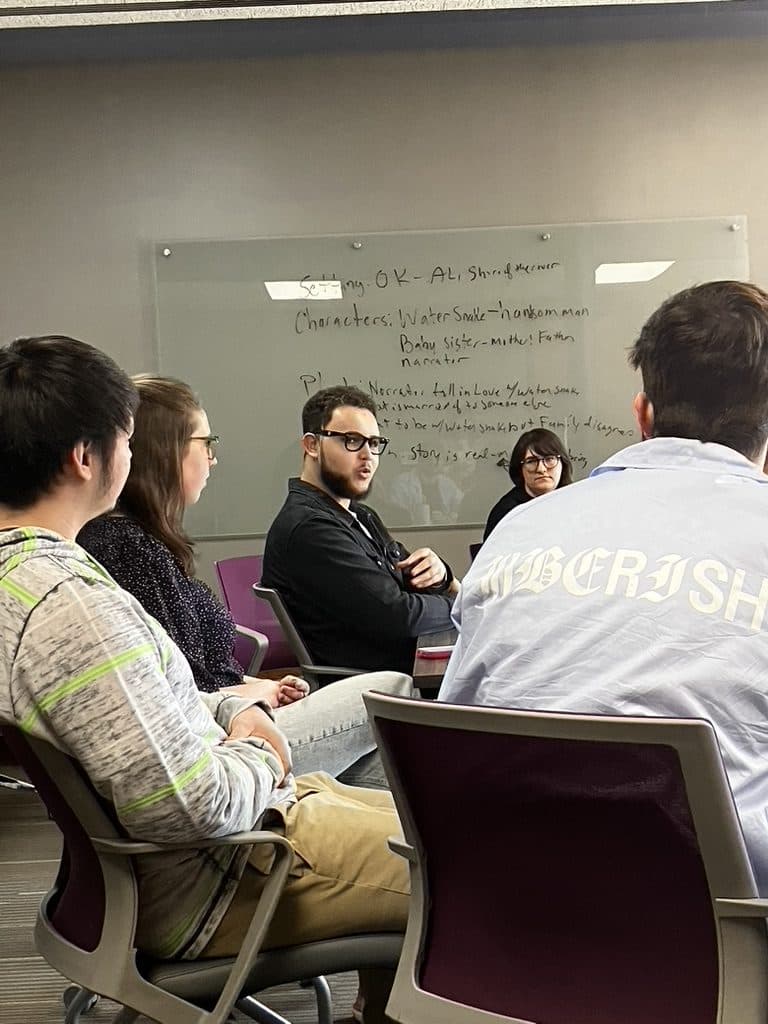
RMCAD is a hotspot for young talent craving to create and make a name for themselves. As such, Tré Seals is a walking inspiration to young artists no matter their medium. Seals’ introspective attitude helped him build his dream career, creating the type of art he wanted to see in the world and not just producing content that we thought would sell. As RMCAD students look towards their own careers, it is clear that Tré Seals left a powerful message for all artists to be true to themselves and their culture. Genuine success comes from pride in one’s work. That was certainly true for Seals, and it’s true for all the members of the RMCAD community looking to create the types of artwork that they believe the world needs.
“Our lives begin to end the day we become silent about things that matter” -Martin Luther King Jr.
Many of the quotes in this story have been edited for brevity and clarity by the author, but are meant to retain the significance and purpose of the original speaker.
